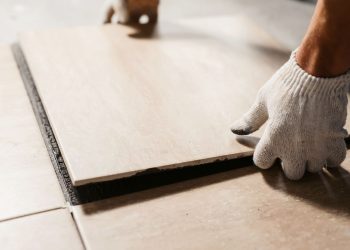If you’re planning a new paint project, you will likely end up at your local hardware store to collect all of your essential tools. Of course, one of the most important pieces for painting is your brush. The type of brush you will need depends on the type of project you’re planning and you may find that choosing the right brush can quickly become overwhelming as there are many to choose from. Here’s a guide to understanding and choosing which paint brush is best for your project.
Consider Brush Material
Paint brushes are available with either synthetic bristles or natural bristles made from animal hair. Natural bristle brushes often have split ends, allowing the brush to hold more paint and distribute it more evenly. This brush material is the best option for oil-based paints, stains and sealers. As for water-based paints, however, this material will soak up the paint and quickly soften the brush, potentially causing streaks and drips.
As for synthetic bristle brushes, which are made with either nylon, polyester or a blend of both, water-based paints, stains and sealers will be the best choice. Because they do not absorb water like the natural bristles, the finish will come out much smoother and allow for more control. Synthetic brushes are also much easier to clean, but often cost more money.
Determine Size and Style
Just as there are different brush materials, there are also many different sizes and shapes, as well as handle styles. Depending on your project, each of these factors can play a big part in the finished product. Here are the most common size options you will find in stores:
- 1 – 1 ½ inch (straight or angled)
- 2 – 2 ½ inch (straight or angled)
- 3 – 4 inch (straight)
For painting or varnishing woodwork, a smaller brush will allow for more control. For projects that include a trim larger than 3 inches, you will often find a larger brush will hold more paint and get the job done quickly. Smaller brushes are also helpful in tight corners, around socket plates and for smaller projects in general. Just remember, the larger your brush, the less precision allowed.
As for brush shape, you have a choice between straight and angled. If you are planning to paint trim or cut-ins before using a roller on a large wall, the angled brush would be the best choice, making it easier to control the line of paint. For wide, flat surfaces, a straight brush will work best, covering a larger area with a smooth finish.
Make Them Last
Once you’ve chosen your brushes and completed your project, be sure to properly clean your brushes.
For water-based projects, thoroughly clean your synthetic brushes with warm, soapy water. With the bristles pointing down, work them gently with your fingers until the water runs clear. Shake the brush to align the bristles and hang to dry. Be sure to store in a sleeve to keep the bristles protected.
For oil-based projects, swirl your natural bristle brush into a cup of paint thinner for about 30 seconds, then wipe the brush along the edge of the cup. Repeat this process until there is no longer paint coming from the brush. Rinse the brush with soap and water and dry. Store the brush in a sleeve to keep the bristles protected.
Before you know it, you will have your own collection of brushes at the ready for any project you can dream up.











